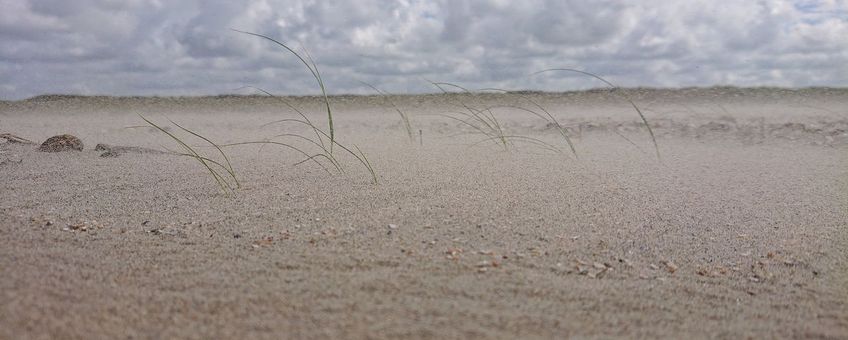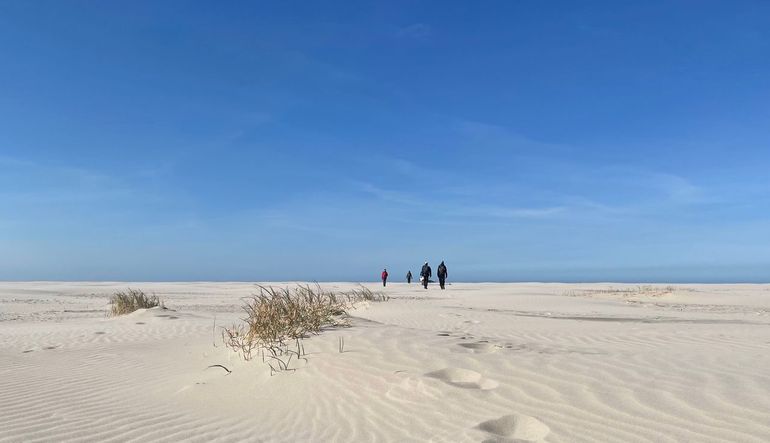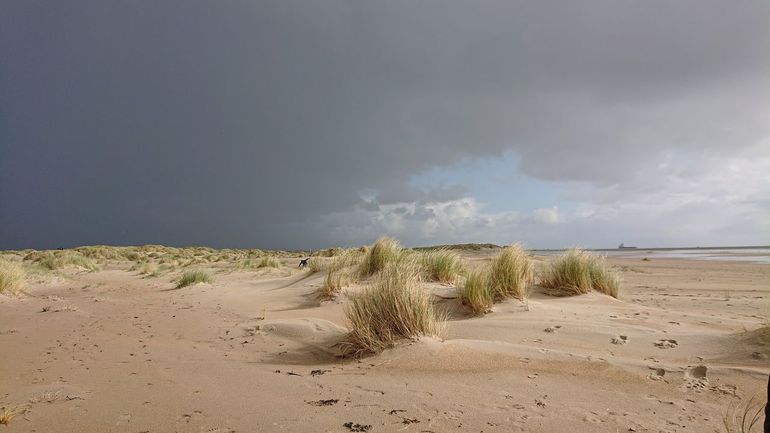
Sound couch makes low dunes, marram grass builds height
NIOZ Royal Netherlands Institute for Sea Research"Until now, the idea was that marram grass settles on top of very young dunes that may have been formed by sand couch, but our results show something different," Lammers said. She defends her thesis on April 2 at the University of Groningen.
Wide or high dunes
Initiation of each dune starts by accumulation of the first grains of sand on a beach. Both young sand couch and marram grass can provide the necessary shelter to start a dune. Yet marram grass is better at creating a high dune, Lammers explains. "Marram grass hates wet feet, it is less able to withstand flooding by the sea. We think that's why marram grass wants to quickly elevate itself by locally capturing more sand and forming a narrow, high dune. Sand couch is a bit more tolerant of salty conditions, so it doesn't grow upward as quickly but spreads more horizontally."
Creating shelter
The idea used to be that marram grass could only establish itself once sand couch had formed young, so-called embryonic dunes. But in an experiment with thousand young marram grass plants, Lammers and colleagues discovered that these plants actually settle less quickly on those embryonic dunes. "In other words, sand couch even seems to have a local negative effect on the establishment of marram grass," Lammers says. At the same time, she saw that the low dunes formed by sand couch could, under the right conditions, provide enough shelter to allow marram grass to establish on the bare patches in between.

Helping dune formation
Knowledge about characteristics of specific plants and their interactions is important in restoring coastal landscapes, Lammers emphasizes. "Dunes and also salt marshes play an important role in coastal defense and in biodiversity. In our project, we also conducted experiments with biodegradable structures, which could aid the establishment of new dune or salt marsh plants. But ff you want to use those structures in the right way, you have to understand how plants affect each other."
Text: NIOZ
Photos: Carlijn Lammers

